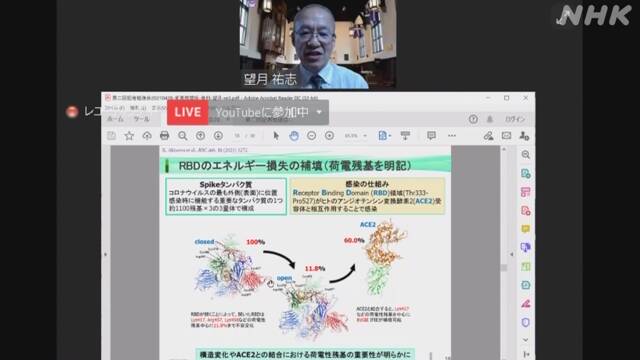A group such as Rikkyo University has elucidated one of the mechanisms by which a mutant virus of the new coronavirus is more susceptible to infection than conventional viruses by simulation using the supercomputer "Tomitake".
The group says that this is a result that supports the high infectivity of the mutant virus.
The research was conducted by groups such as Rikkyo University and Kobe University.
The new coronavirus infects when the "spiked protein" on the surface binds to a special protein in human cells, but the group uses the latest supercomputer "Tomitake" to exert the force between protein molecules. I analyzed it.
As a result, in the virus with a mutation called "N501Y" that was first confirmed in the United Kingdom, a part of the tip of the "spiked protein" was changed, and the ability to attract the protein of the cell was increased by 1.03 times compared to the past. The result is that there is.
Also, when there are mutations such as "E484K" in addition to "N501Y", the location of the binding protein molecule has changed, which has increased the attraction force by about 1.2 times compared to conventional viruses.
The force acting between the virus and the cell needs to consider the relationship between a huge number of molecules, and complicated calculation is required, so it is said that precise calculation became possible by using "Tomitake". That is.
It is said that the susceptibility to virus infection is affected by other factors, but Professor Yuji Mochizuki of Rikkyo University said, "The high infectivity of the mutant virus has been calculated to be supported in the future. Would like to proceed with the analysis of mutant viruses confirmed in India and use them for infection control. "

